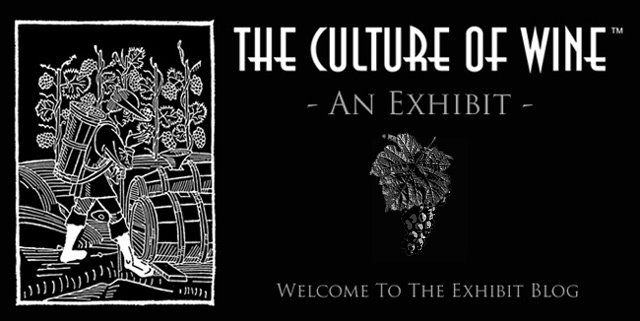
Well, it's finally here....opening day. After months of planning and work the gallery doors opened at 9:30AM and visitors began exploring the exhibit. We actually just wrapped up some minor tweaking of things on Sunday afternoon. I drove home for the most part feeling good about the finished product. There were still a few things that I wanted to improve on, but the library staff was satisfied and I decided that we were good to go. Sunday night back in Houston, I poured myself a glass of 2006 Corley Proprietary Red wine and enjoyed the feeling of completion. After 16 - 18 hour work days for weeks, it was good to be finished.
Monday evening the Library invited some guests to hear a presentation by author George M. Taber. He wrote the excellent book 'Judgment of Paris' which I read about four times on flights from Houston to Oakland and back. Much of the exhibit revolves around the period of that famous 1976 event that really changed the face of the wine world. After the presentation about the Paris Tasting guests gathered in the Library rotunda for a small wine and cheese reception, Mr. Taber signed books and then people started touring through the exhibit. For the most part the feedback was very positive. People seemed to really like the realism of the artificial vineyard, crush pad and cellar...hopefully they read a few of the reader rails and maybe learned a few small things about winemaking or some points that will be beneficial down the road in the quest for expanded wine knowledge and appreciation.
The photo at the top of the page shows a mannequin (as grape picker) carrying a 'just harvested' lug of grapes. (Photo by Wilf Thorne)
Monday evening the Library invited some guests to hear a presentation by author George M. Taber. He wrote the excellent book 'Judgment of Paris' which I read about four times on flights from Houston to Oakland and back. Much of the exhibit revolves around the period of that famous 1976 event that really changed the face of the wine world. After the presentation about the Paris Tasting guests gathered in the Library rotunda for a small wine and cheese reception, Mr. Taber signed books and then people started touring through the exhibit. For the most part the feedback was very positive. People seemed to really like the realism of the artificial vineyard, crush pad and cellar...hopefully they read a few of the reader rails and maybe learned a few small things about winemaking or some points that will be beneficial down the road in the quest for expanded wine knowledge and appreciation.
The photo at the top of the page shows a mannequin (as grape picker) carrying a 'just harvested' lug of grapes. (Photo by Wilf Thorne)









